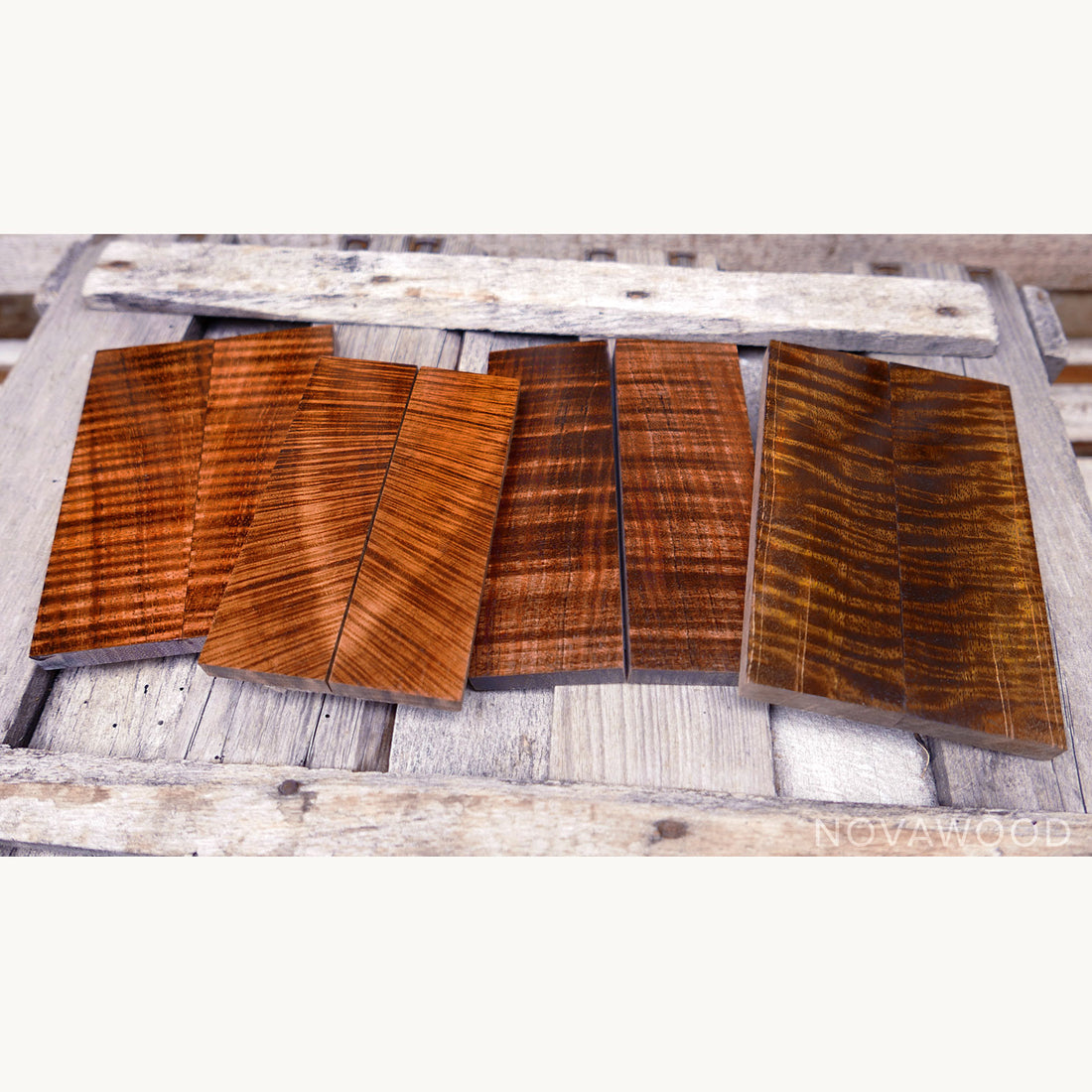Curly Koa (Acacia Koa) only grows in Hawaii, and it is one of the most expensive woods one can buy. It is primarily used for instruments like ukuleles and was traditionally crafted by indigenous inhabitants into surfboards.
This is well-known among ambitious knife makers.
In reality, the wood earns its exclusive reputation, even though it grows quickly due to the favorable climatic conditions in its homeland and falls within the middle weight class despite its strength.
To enhance its durability, it is often stabilized, intensifying the honey-colored brown tones and showcasing the figure beautifully.
Overall, it is a dreamy and sought-after wood that is rarely available and is typically used in very high-quality knives.
Less known, and we have been striving for years to change this, is Curly Gidgee (Acacia cambagei).
Also a species of acacia, but native to the Australian Outback, it resembles Koa not only botanically. If one is fortunate enough to hold both woods, the difference in weight becomes apparent. Gidgee naturally grows very slowly in the Outback, making it extremely dense and one of the heaviest woods overall.
Stabilization is unnecessary or even futile, as no resin would penetrate the wood.
It is usually salvaged as deadwood since it would take an incredibly long time to dry. The figure of Gidgee can be incredibly fine, so much so that it can be referred to as needle figure.
In comparison to Koa, Gidgee tends to have more brownish, darker tones, although there are naturally pieces that can be placed side by side with Koa, and one can hardly discern a difference.
In its home country, it is also commonly referred to as stinking wattle, although unpleasant odors have never been noticeable to me in the deadwood that we receive. Fortunately, the questionable aromas seem to break down during the drying process.
Let's move on to the third type of wood in this trio: Curly Blackwood (Acacia Melanoxylon), another type of acacia, can be found not too far from Australia, specifically in Tasmania.
In essence, it's somewhat like the middle sister – a bit denser than Koa, a figure not as fine as Gidgee, but still with dreamy colors and a fantastic three-dimensional, striated structure.
It's a familiar type with not much more to add.
To complete the picture, let's mention a visually related but not botanically related wood: Curly Mango (Mangifera indica), which is native to Asia and, surprisingly, Hawaii as well.
It is obtained from mango plantations, where old non-bearing trees are harvested, and the wood is mainly used for furniture, etc. In rare cases, the wood is figured, and it is then also used for stringed instruments.
Curly Mango looks quite similar to Curly Koa; even the fine, worm-like grain is present in this wood.
The main difference is the slightly lighter color (which is why we often stabilize the wood in orange-brown) and the significantly broader, sometimes curvy figure.
Since Curly Mango is not among the most expensive woods, it provides a budget-friendly option. Visually, it's a good alternative to acacias, all of which fall into a higher price range.
A.M.


